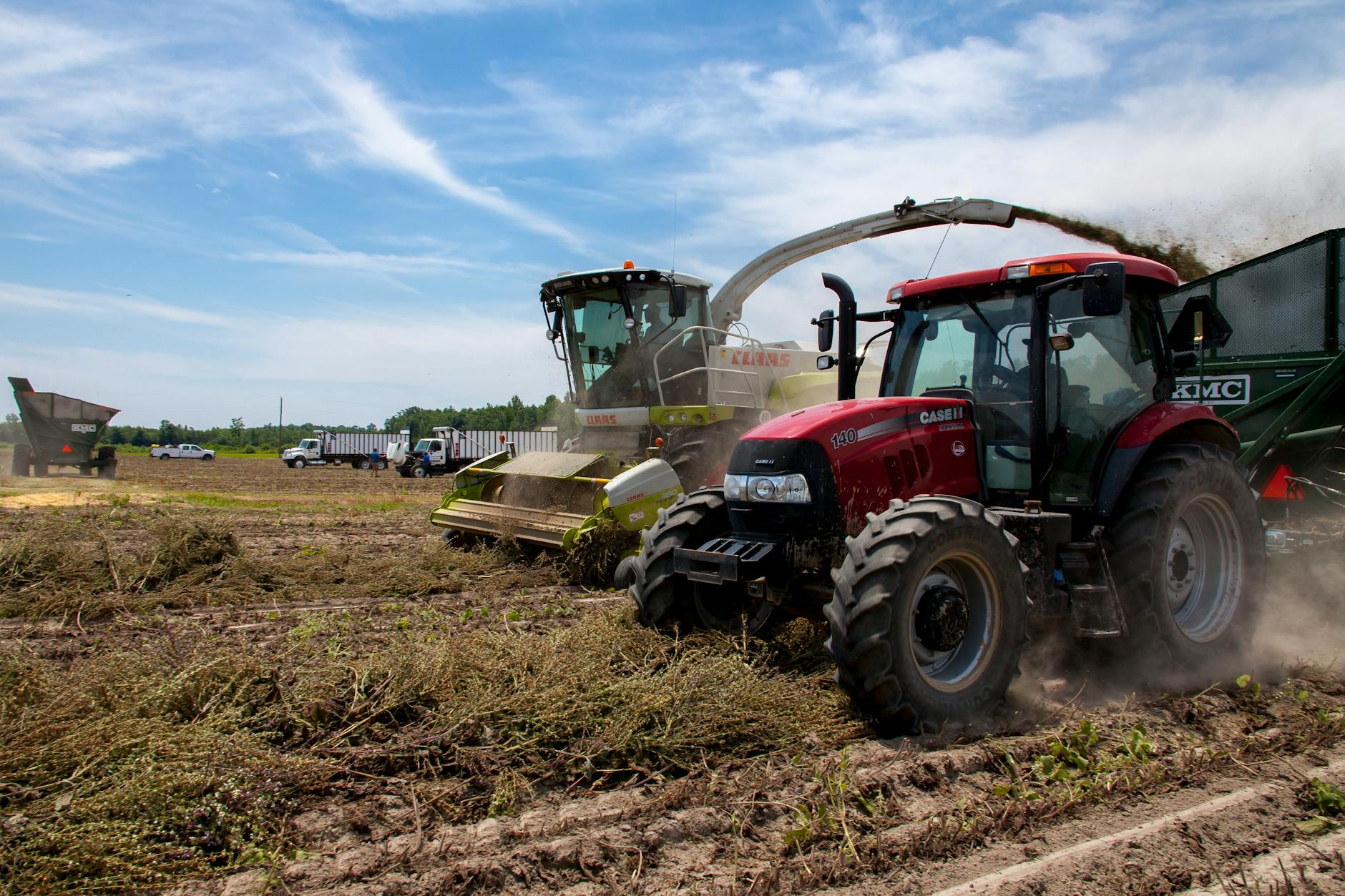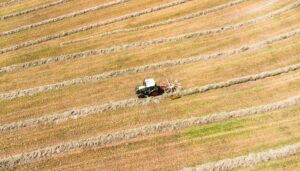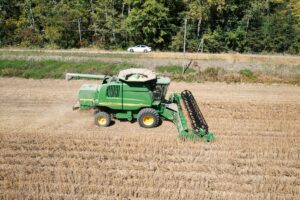Case IH is a globally recognized brand in the agricultural machinery industry, producing a wide range of high-performance tractors designed for farmers worldwide. If you’re wondering, “Where are Case IH tractors made?”, the answer isn’t limited to just one location.
Case IH tractors are manufactured in several state-of-the-art facilities across the world, each specializing in different models suited for various agricultural needs. From the United States to Europe, South America, and Asia, Case IH ensures that its tractors are built with regional demands and global quality standards in mind.
In this article, we’ll explore where Case IH tractors are made, what models are produced at each facility, and how Case IH’s global presence ensures efficiency, durability, and innovation in farming.
A Global Network: Case IH’s Manufacturing Plants
1. Racine, Wisconsin, USA – The Heart of Case IH Manufacturing
📍 Primary Models Produced: Magnum Series The Racine, Wisconsin facility serves as the headquarters for Case IH tractor production and is one of the most important sites in the company’s global manufacturing network.
- The Magnum series tractors (180-400 HP) are built here, known for their power and versatility in large-scale farming.
- The plant also houses Case IH’s engineering and innovation teams, ensuring cutting-edge advancements in tractor technology.
- Racine’s facility has been in operation for over 175 years, making it a cornerstone of Case IH’s legacy.
2. Fargo, North Dakota, USA – Home of the Steiger and Quadtrac Tractors
📍 Primary Models Produced: Steiger & Quadtrac Series The Fargo, North Dakota plant specializes in high-horsepower, 4WD tractors designed for demanding farming applications.
- Steiger and Quadtrac series tractors (370-620 HP) are produced here, which are among the most powerful in the Case IH lineup.
- These tractors are built for heavy-duty tillage, large-scale seeding, and industrial-scale agriculture.
- The Fargo plant has been in operation since the 1960s, maintaining a strong reputation for producing durable and high-performance tractors.
3. St. Valentin, Austria – The European Production Hub
📍 Primary Models Produced: Puma, Optum, and Vestrum Series The St. Valentin facility in Austria is Case IH’s primary production hub for European markets.
- This plant manufactures the Puma series (140-240 HP), Optum series (250-300 HP), and Vestrum series (100-130 HP).
- European farmers prefer these models due to their fuel efficiency, compact design, and precision farming technology.
- This facility has been recognized for its sustainability efforts and advanced production processes, making it one of the most modern agricultural manufacturing sites in Europe.
4. Curitiba, Brazil – Serving South American Agriculture
📍 Primary Models Produced: Farmall and Puma Series The Curitiba plant in Brazil produces tractors tailored for South American farming conditions.
- Models produced here include the Farmall and Puma series, which are popular among mid-sized farms.
- The plant also serves as a regional hub for agricultural innovation, focusing on solutions for tropical and subtropical climates.
- South America is a major agricultural powerhouse, and Case IH ensures its tractors are optimized for crops like soybeans, sugarcane, and corn.
5. Harbin, China – Manufacturing for the Asian Market
📍 Primary Models Produced: Localized Versions of Farmall and Puma As China’s agricultural industry continues to modernize, Case IH has invested in local manufacturing through its Harbin facility.
- This plant primarily produces smaller and mid-range tractors suited for Asian farms.
- Case IH works closely with Chinese agricultural organizations to develop tractors that meet local regulations and farming needs.
- The Harbin plant plays a crucial role in expanding the Case IH brand across China and neighboring Asian countries.
6. Pune, India – Supporting Agriculture in the Indian Subcontinent
📍 Primary Models Produced: Farmall and JXT Series India is one of the world’s largest agricultural markets, and Case IH meets local demands through its Pune facility.
- The Farmall series and JXT series tractors are produced here, designed for small-scale and mid-sized farms.
- Indian agriculture relies heavily on cost-effective and fuel-efficient tractors, which Case IH has optimized for crops like wheat, rice, and sugarcane.
- The Pune plant supports not just India but also other South Asian markets, including Pakistan, Bangladesh, and Sri Lanka.
Why Case IH Uses a Global Manufacturing Approach
Case IH’s global production strategy allows it to cater to farmers worldwide by manufacturing tractors closer to key agricultural markets. Here’s why this approach benefits farmers:
1. Regional Optimization
Tractors are customized to fit the unique farming conditions of different regions. For example:
- European tractors emphasize fuel efficiency and compact designs.
- North American tractors focus on power and precision for large-scale farms.
- South American tractors are built to handle humid and tropical climates.
2. Faster Delivery & Supply Chain Efficiency
Having multiple manufacturing plants ensures faster shipping and lower logistics costs, allowing farmers to get their equipment sooner.
3. Stronger Local Support & Service
With tractors being built closer to their primary markets, farmers benefit from localized service centers, spare parts availability, and dealer networks.
4. Sustainable Production Practices
- Case IH integrates energy-efficient manufacturing processes in all of its plants.
- The company is investing in electric and hybrid tractors, reducing its carbon footprint.
- Many plants use recycled materials and renewable energy to minimize environmental impact.
How Case IH Manufacturing Impacts Tractor Buyers
1. Are All Case IH Tractors Built with the Same Quality?
Yes. Regardless of where a Case IH tractor is manufactured, all models follow the same rigorous quality control standards set by CNH Industrial, the parent company of Case IH.
2. Can I Tell Where My Tractor Was Made?
Yes! Case IH tractors typically have a label or plate indicating the manufacturing plant location. You can also check the VIN (Vehicle Identification Number) to trace where your tractor was built.
3. Does Manufacturing Location Affect Tractor Price?
Sometimes. Factors like import taxes, currency exchange rates, and local manufacturing costs can affect tractor prices in different regions. However, Case IH ensures competitive pricing across all markets.
Conclusion: A Global Brand with Local Expertise
So, where are Case IH tractors made? The answer lies in a global network of advanced manufacturing plants spanning the USA, Europe, South America, Asia, and beyond.
Case IH’s regional production strategy ensures that tractors are: ✅ Tailored to specific farming conditions ✅ Readily available for farmers worldwide ✅ Built with cutting-edge technology and quality
Whether you’re a large-scale North American farmer, a European precision agriculture expert, or a small-scale grower in Asia, Case IH has a tractor designed and manufactured for your needs.
Would you like to learn more about the latest Case IH tractor models and innovations? Stay connected for updates on agriculture’s most trusted brand!



